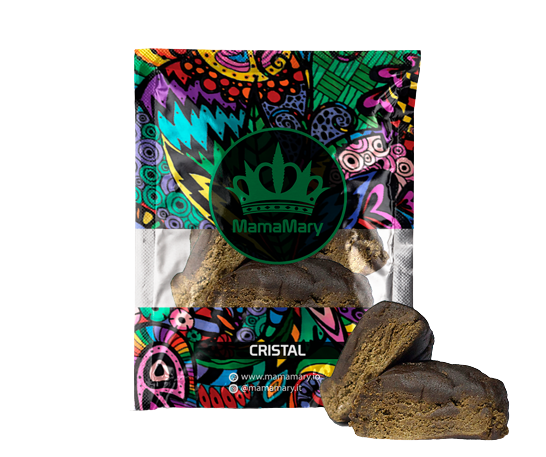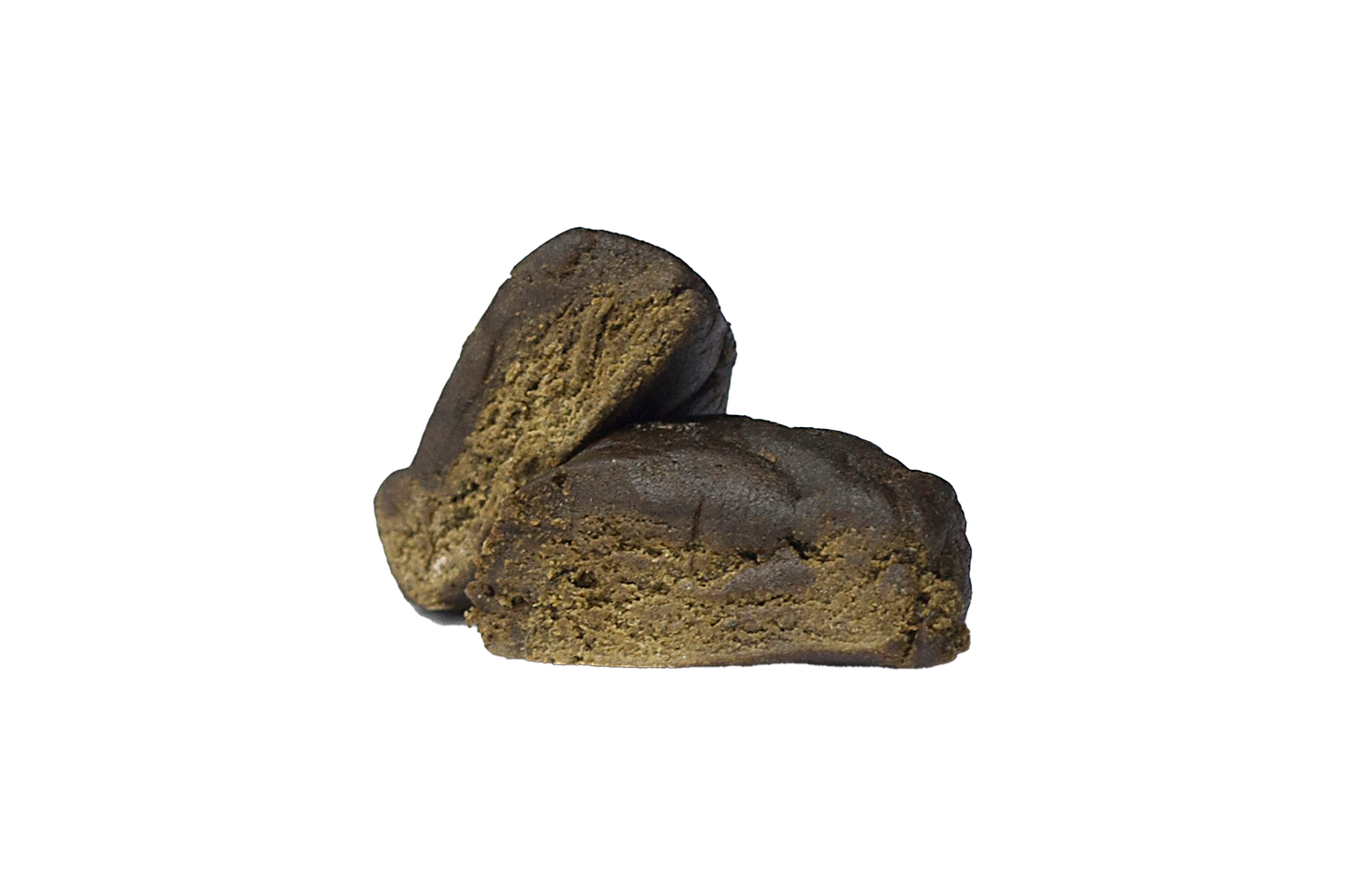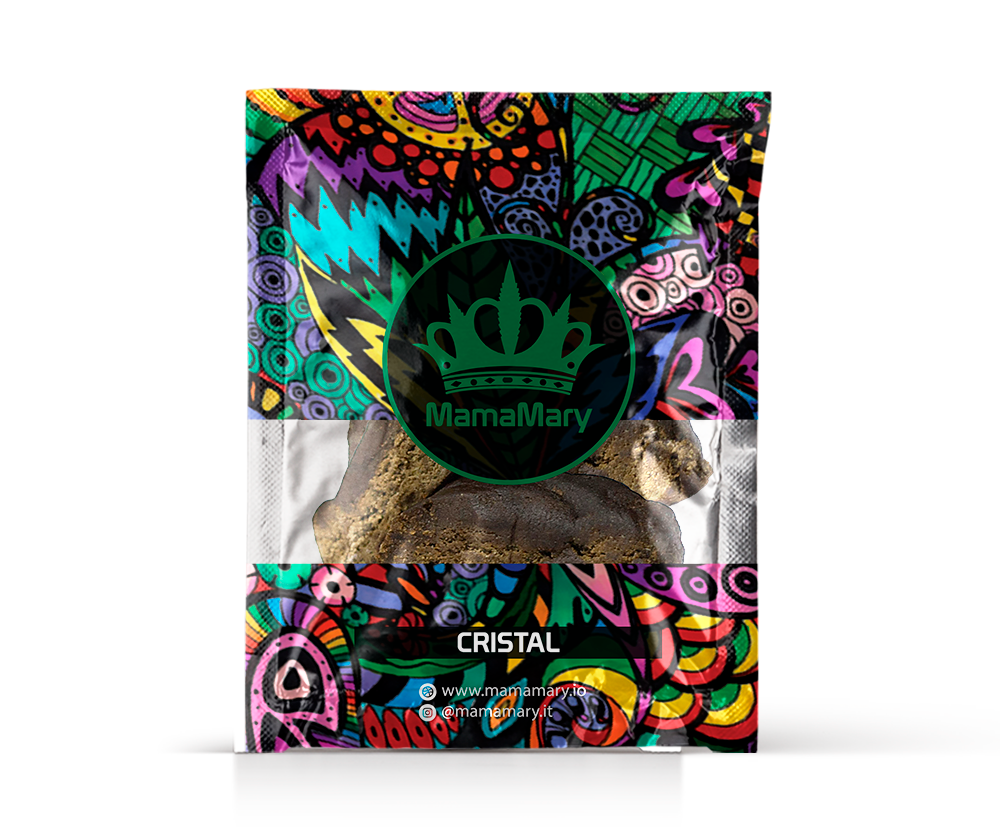mamamary
CRYSTAL HASH | CBD 40% THC > 0.2% - Hashish Light variety
CRYSTAL HASH | CBD 40% THC > 0.2% - Hashish Light variety
Couldn't load pickup availability
Crystal Hash: The History and Origins of this Crystal Hashish Extracted from Cannabis
The world of crystal hashish is vast and fascinating, rich in history, production techniques and varieties that make it a unique product in the cannabis sativa panorama.
What is Hashish Light CBD?
Legal hashish, also known as hash, is a light cannabis concentrate obtained through the collection and compression of the resin of hemp plants. This resin is rich in cannabinoids, including cannabidiol and THC, as well as terpenes and other compounds that contribute to its aroma and effects.
Traditionally, hashish is made by sifting pollen from cannabis inflorescences to separate the trichomes, the small resinous glands that contain most of the cannabinoids. These trichomes are then compressed to form a compact, malleable mass, which can range in color from light green to dark brown.
How Is Crystal Hashish Extracted?
The crystal hashish extraction process is sophisticated and requires specialized equipment to ensure a high-quality product. Initially, the inflorescences of the best legal hemp varieties are frozen to preserve the trichomes, which are then separated from the plant using cold sieving techniques.
Once harvested, the trichomes are further purified through filtration and washing processes to remove any impurities. The result is a pure crystalline powder, composed almost exclusively of cannabinoids, which is compressed to form crystal hashish. This method guarantees exceptional purity and a high level of CBD.
What Are the Differences Between Hashish and Crystal Hashish?
Traditional hashish and crystal hashish differ mainly in the extraction method and the purity of the final product. While traditional hashish may contain varying levels of impurities and a blend of cannabinoids, crystal hashish is known for its superior purity and high concentration of CBD.
Crystal hashish is produced using advanced extraction and purification techniques that remove all impurities, ensuring a product with a very high CBD content and no THC. This makes it a popular choice for those looking for a cannabis drinking experience without the psychoactive effects of THC.
What Are the Best Hashish Strains?
The best hash strains depend on several factors, including the quality of the cannabis plants grown and used and the extraction method. Sustainably grown flowers are able to guarantee the highest quality and purity of the final product. Some of the most popular strains include Moroccan hash, known for its smooth texture and rich aroma, and Afghan hash, famous for its potency and dark color.
Crystal hashish, in particular, is prized for its purity and high concentration of CBD. This variety of hashish offers a unique experience free from the psychoactive effects of THC, making it an ideal choice for those looking for a high quality product that complies with current legal regulations.
Share
Customer Reviews
No approved reviews yet. Be the first to share your thoughts!
Leave a Review
-
LEGAL
Plant parts of Cannabis Sativa L. with THC levels within legal limits. Ornamental, horticultural use, for research and development and all uses permitted by law. 242/16 art 2, letter G.
Warnings: Do not use during pregnancy, do not ingest, it is not a food or medicinal product. Sale to children under 18 is prohibited, keep out of reach of children.
Non-narcotic, it does not produce any psychotropic effects. Non-combustible. Inappropriate use could harm your health. In case of inappropriate use, do not drive. The product is subject to weight loss and may lose color due to photooxidation.
Store in a dark, cool, dry place. All references to the benefits of CBD on this site are not intended to provide any health-related advice, but only mention what scientific research has discovered ''Compliant with all relevant Italian and European laws: USA Farm Bill 2018, USDA Agriculture Improvement Act of 2018, EU regulation 1307 art. 32, EU regulation 1308 art. 189, EU Directive 98/56/EC, Information note on the cultivation of hemp from the Spanish Ministry of Agriculture, Fisheries and Food, Law 242/2016, MIPAAF Circular of 8.5.2009, MIPAAF Circular of 22.5.2018, Presidential Decree 309/90 - article 26 DM 9.08.2000.






